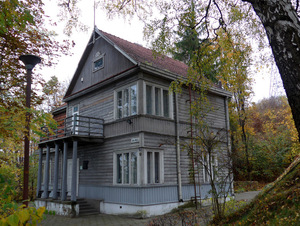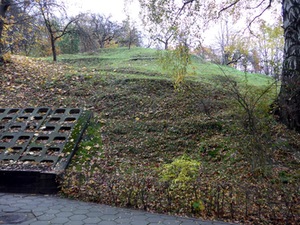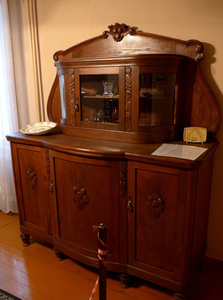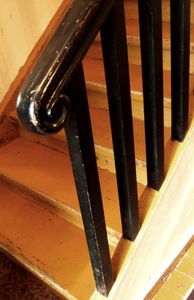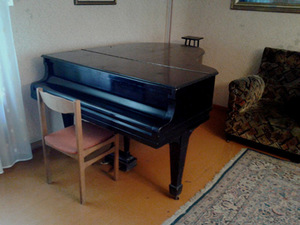Visiting wooden houses of Kaunas: Juozas Gruodis Memorial Museum 4
In brief: The construction of wooden houses of various types spread in Kaunas in the second half of the 20th century: from small houses with few decorations, one-storeyed, of homestead type to city houses and decorative villas, spacious summer houses. Relatives of intellectuals of inter-war usually live in such houses. They may be admired from the outside but the interior details are most usually not known to the wide public. A different situation is with wooden houses that belonged to famous Lithuanian activists and that are used for public purposes.
One of the interwar wooden houses open to visitors is located more remotely from the centre of Kaunas, at Salako St. 18. The house belonged to the famous Lithuanian composer Juozas Gruodis. A memorial museum called by the name of the composer operates in the building at the moment. J. Gruodis and his wife lived here from 1932 to death in 1948. S. Gruodienė was appointed a flat in Kęstučio St. in 1969 and the house was taken over by the Culture Division of the Executive Committee of the Working People Deputies’ Council of Kaunas City. A music library was open in the house for some time. The memorial museum was established here in 1974 and the building was repaired at that time. The building was included into the Register of Cultural Values in 1993.
The wooden house was designed by the famous architect of the time Feliksas Vizbaras. The architect aimed to match the building to the slope overgrown with trees; thus, he combined the volumes of the first and second floor. Elements typical of Lithuanian folk art have been used for the decoration of the house moderately. According to Prof. Nijolė Lukšionytė, “the decorations of the bay window and shelter reflect the motifs of ethnical music loved by the composer.”
The garden designed by the composer himself surrounded the house of Gruodžiai.
One flat was planned across two floors. After establishing the museum, the parlour was reconstructed. One may admire the authentic furniture, tile furnace and the carpet that have remained in the house.
The house of Juozas Gruodis charms not only by its authenticity, nature but also by activities carried out here. The exposition of life and creative work of Juozas Gruodis is presented in the house, poetry events are organised here, music resounds in the former office of Juozas Gruodis. Students of Juozas Gruodis Conservatoire organise concerts here on a regular basis. Educational programmes offer to the participants to learn many facts about the life of the composer and his wife. People interested in wooden heritage may see the almost unchanged wooden house and its interiors.








